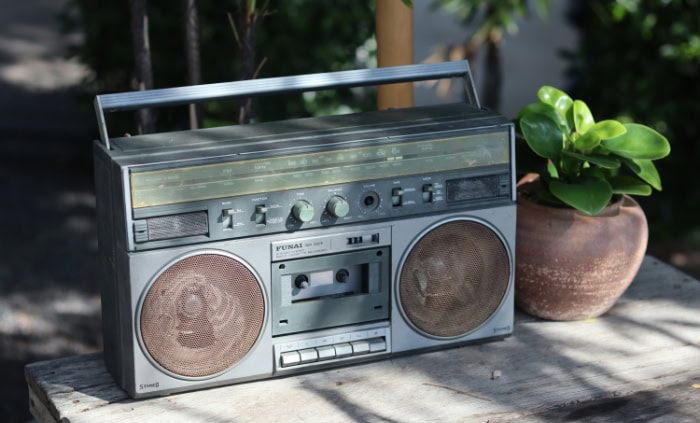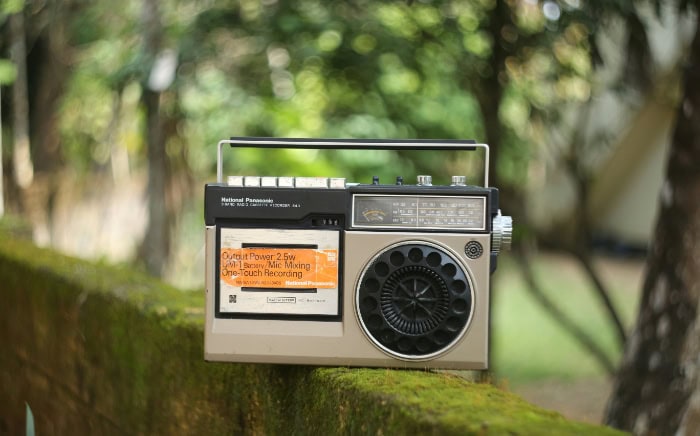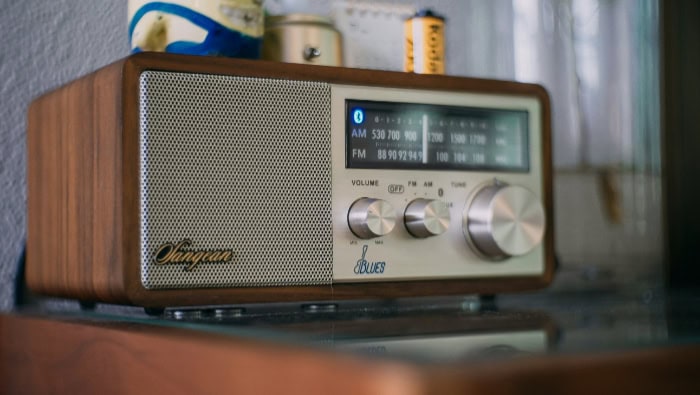Do People Still Listen to the Radio? Reasons Why It Thrives

Radio has been a constant companion for generations, weaving itself into the fabric of our daily lives. From the early days of crackling AM broadcasts to the crisp digital signals of today, radio has proven its staying power in an ever-changing media landscape.
While the rise of streaming services and podcasts has reshaped the way we consume audio content, radio continues to hold a unique and vital place in our society.
Radio’s Reach and Demographics
Radio has maintained an impressive reach, connecting with a wide range of listeners across various demographics. To understand radio’s enduring appeal, it is essential to examine its audience composition and compare its reach to other popular audio formats.
The Diversity of Radio’s Audience
Radio’s audience spans multiple generations, with listeners ranging from teenagers to seniors. While younger generations may be more inclined to embrace newer audio formats, a significant portion of them still tune in to radio regularly.
Geographically, radio’s reach extends to both urban and rural areas. Local radio stations serve as important hubs for community information, entertainment, and connection, particularly in smaller towns and cities where other media options may be limited.
Radio vs. Other Audio Formats
While podcasts and music streaming services have gained significant popularity in recent years, radio remains a dominant force in the audio landscape.
One reason for radio’s continued success is its accessibility. Unlike podcasts or streaming services, which require an internet connection and a device capable of accessing them, radio can be enjoyed with a simple, inexpensive receiver.
This makes radio a convenient choice for people who may not have reliable internet access or who prefer a more straightforward listening experience.
Moreover, radio’s live broadcast format sets it apart from on-demand audio options. The shared experience of listening to a live radio program fosters a sense of community and connection among listeners, something that pre-recorded podcasts or personalized music playlists cannot easily replicate.
How Radio Strengthens Community Ties
One of radio’s greatest strengths is its ability to forge deep connections with local communities. Local radio stations often serve as the heartbeat of their communities, providing a platform for local voices, events, and issues that may not receive attention from larger media outlets.
Through local news, weather updates, traffic reports, and community-oriented programming, radio stations keep listeners informed about the things that matter most to them. This localized content helps foster a sense of belonging and shared identity among listeners, strengthening the bonds within communities.
Furthermore, local radio personalities often become trusted figures, forging personal connections with their listeners. These on-air talents not only entertain but also serve as community advocates, using their platforms to raise awareness about important causes, support local businesses, and rally listeners around common goals.
The Enduring Appeal of Radio in the Digital Age
In an era dominated by digital media, it may seem surprising that radio continues to captivate millions of listeners worldwide. However, a closer examination reveals several compelling reasons why people still tune in to this classic medium.
The Convenience Factor
One of the primary reasons for radio’s ongoing popularity is its unparalleled convenience and accessibility. Unlike other audio formats that require a device with an internet connection, radio can be enjoyed with a simple, battery-powered receiver or through a car’s built-in audio system.
This ease of access makes radio a go-to choice for many people, particularly during their daily commutes or while running errands.
Moreover, radio’s portability allows listeners to enjoy their favorite programs while engaging in other activities, such as cooking, exercising, or working. This flexibility enables radio to seamlessly integrate into people’s daily routines, making it an essential part of their lives.
The Human Touch
Another significant factor contributing to radio’s enduring appeal is its ability to provide companionship and foster human connection. In a world where digital interactions often lack the warmth and immediacy of face-to-face communication, radio offers a comforting presence that can alleviate feelings of loneliness or isolation.
Through the familiar voices of local radio personalities, listeners develop a sense of kinship and trust. These on-air talents often share personal stories, opinions, and experiences, creating a bond with their audience that extends beyond the airwaves.
This human connection is particularly valuable for those who may be isolated due to age, illness, or other circumstances.
Furthermore, radio’s live format creates a sense of shared experience among listeners. Whether it’s a morning show discussing the day’s headlines or a late-night program taking song requests, radio fosters a feeling of community and togetherness that is difficult to replicate through other audio formats.
Curated Music and the Thrill of Discovery
For music lovers, radio remains an essential source of curated content and new artist discovery. Despite the abundance of music streaming services that offer personalized playlists, many listeners still appreciate the human touch that radio provides in selecting and introducing new music.
Radio DJs and programmers bring their expertise and passion to the airwaves, carefully crafting playlists that expose listeners to a diverse range of genres and artists. This curated approach helps listeners discover new favorites and expand their musical horizons, without the overwhelming choices that streaming platforms often present.
Moreover, radio’s live format creates a sense of excitement and anticipation, as listeners eagerly await the next song or artist introduction. This element of surprise and discovery is a key part of radio’s appeal, keeping listeners engaged and coming back for more.
Informing and Entertaining
Radio’s ability to simultaneously inform and entertain listeners is another reason for its continued relevance. Many radio stations offer a mix of music, news, weather updates, and local information, providing a well-rounded listening experience that keeps audiences engaged and informed.
Through news bulletins, traffic reports, and community-focused segments, radio keeps listeners connected to the world around them. At the same time, music, humor, and entertaining discussions provide a welcome respite from the stresses of daily life.
This dual role of information and entertainment makes radio a valuable companion throughout the day, offering listeners a balanced and engaging audio experience that adapts to their changing needs and moods.
Radio’s Resilience Among Technological Change

Throughout its history, radio has faced numerous challenges from emerging technologies that threatened to disrupt its dominance in the audio entertainment landscape. However, radio’s ability to adapt and evolve has enabled it to remain a vital and relevant medium, even in the face of intense competition from digital audio platforms.
Adapting to New Technologies
Radio’s resilience can be attributed, in part, to its willingness to embrace technological advancements and incorporate them into its broadcasting strategies. From the transition from AM to FM broadcasting to the adoption of digital radio technology, radio has consistently found ways to improve its sound quality, expand its reach, and enhance the listener experience.
In recent years, radio stations have also embraced the power of the internet to extend their reach beyond traditional broadcast boundaries. Many stations now offer live streaming through their websites and mobile apps, allowing listeners to tune in from anywhere in the world. This digital presence has helped radio stations to expand their audience base and remain accessible to younger, tech-savvy listeners.
Differentiation Strategies
To compete effectively with digital audio platforms, radio stations have developed strategies to differentiate themselves and offer unique value to their listeners. One such strategy is a focus on local content and community engagement.
By providing news, weather updates, and information specific to their local markets, radio stations create a sense of connection and relevance that generic, algorithm-driven playlists cannot match. This localized approach fosters loyalty among listeners who rely on radio to keep them informed and connected to their communities.
Additionally, radio stations often partner with local businesses, organizations, and events to create unique content and promotional opportunities. These partnerships not only provide valuable exposure for the organizations involved but also help to reinforce radio’s role as a vital part of the local community fabric.
The Power of Personality
Another key differentiator for radio is the enduring power of radio personalities. In an age where digital audio platforms rely heavily on algorithms and automated recommendations, radio’s human touch remains a compelling draw for many listeners.
Radio personalities bring a level of warmth, humor, and spontaneity to the airwaves that is difficult to replicate through pre-recorded or computer-generated content. These on-air talents often develop strong bonds with their listeners, fostering a sense of familiarity and trust that keeps audiences coming back day after day.
Moreover, radio personalities play a crucial role in curating and introducing new music, providing context and insight that helps listeners discover and appreciate new artists. This human-driven curation sets radio apart from the vast, often overwhelming catalogs of music streaming services.
Embracing Digital Platforms
While radio’s traditional broadcast model remains the core of its business, many stations have successfully embraced digital platforms to expand their reach and engage with listeners in new ways. By adopting an omnichannel approach, radio stations can create a seamless and immersive experience for their audiences across multiple touchpoints.
For example, some radio stations have launched their own podcasts, leveraging their existing content and talent to create on-demand audio programming that complements their live broadcasts. Others have developed robust social media strategies, using platforms like Twitter, Facebook, and Instagram to interact with listeners, share behind-the-scenes content, and extend the conversation beyond the airwaves.
The Power of Radio Advertising in the Digital Age

While radio’s primary function is to inform and entertain listeners, it also serves as a valuable platform for businesses to reach and engage with their target audiences. In an increasingly crowded and competitive advertising landscape, radio offers several unique advantages that make it an attractive choice for marketers.
Cost-Effective Advertising
One of the most significant benefits of radio advertising is its cost-effectiveness compared to other media channels. While television and print advertising can be prohibitively expensive for many businesses, radio offers a more affordable way to reach a large and engaged audience.
Radio’s lower production costs and flexible ad placement options allow businesses of all sizes to create and deploy effective advertising campaigns without breaking the bank. This cost-effectiveness is particularly valuable for small and medium-sized businesses that may have limited marketing budgets but still need to build brand awareness and drive sales.
Building Brand Awareness and Influencing Consumer Behavior
Radio advertising has a proven track record of building brand awareness and influencing consumer behavior. The intimate and personal nature of radio allows advertisers to create memorable and impactful messages that resonate with listeners on an emotional level.
Through the use of creative storytelling, catchy jingles, and compelling calls-to-action, radio ads can effectively communicate a brand’s unique value proposition and motivate listeners to take action. Whether it’s visiting a store, making a purchase, or engaging with a brand online, radio advertising has the power to drive measurable results.
Moreover, radio’s ability to reach listeners during key moments of their day, such as during their morning commute or while running errands, allows advertisers to connect with consumers when they are most receptive to marketing messages. This targeted approach can help businesses to maximize the impact of their advertising spend and achieve a higher return on investment.
Enhancing Digital Marketing Strategies with Radio
In today’s digital-first marketing landscape, radio advertising may seem like an old-fashioned approach. However, radio can actually serve as a powerful complement to digital marketing strategies, helping businesses to create a more integrated and effective omnichannel approach.
By leveraging radio’s broad reach and ability to drive online engagement, advertisers can use radio ads to direct listeners to their digital properties, such as websites, social media profiles, or e-commerce platforms. This cross-channel approach can help businesses to create a seamless and cohesive brand experience for their customers, regardless of where they are in the purchasing journey.
Moreover, radio advertising can help to reinforce and amplify the impact of digital marketing campaigns. By using consistent messaging and creative elements across both radio and digital channels, businesses can create a stronger and more memorable brand identity that resonates with consumers.
Radio: A Lifeline During Emergencies

While radio is often associated with entertainment and information, it also plays a crucial role in emergency communication. In times of crisis, such as natural disasters or power outages, radio becomes a lifeline for communities, providing critical information and support when other forms of communication may be unavailable.
The Reliability of Radio During Power Outages and Natural Disasters
One of the most significant advantages of radio during emergencies is its reliability. Unlike television or internet-based communication, radio can continue to operate even during power outages or when cellular networks are overwhelmed or damaged.
Battery-powered and hand-crank radios allow people to stay informed and connected, even when electricity is not available. This reliability makes radio an essential tool for emergency responders, who rely on it to coordinate relief efforts and disseminate important safety information to the public.
Moreover, radio’s ability to reach remote areas and penetrate buildings makes it a valuable resource during natural disasters, such as hurricanes, earthquakes, or wildfires. When other forms of communication may be disrupted, radio can still provide a vital link between emergency personnel and affected communities.
Radio Stations: Beacons of Hope in Times of Crisis
During emergencies, local radio stations often step up to provide critical information and support to their communities. From broadcasting evacuation orders and shelter locations to sharing updates on relief efforts and road closures, radio stations play a vital role in keeping the public informed and safe.
For example, during Hurricane Katrina in 2005, local radio stations in New Orleans and the surrounding areas worked tirelessly to provide up-to-the-minute information and guidance to residents. Despite facing their own challenges, such as flooding and power outages, these stations remained on the air, offering a lifeline to those in need.
The Importance of Radio in Public Safety and Emergency Preparedness
Beyond its role in providing information during emergencies, radio is also an essential tool for public safety and emergency preparedness. Many communities have established emergency radio networks, such as the Emergency Alert System (EAS) in the United States, which allows authorities to quickly disseminate critical information to the public through radio broadcasts.
These networks are regularly tested and maintained to ensure their readiness in the event of an emergency. By working closely with local radio stations, emergency managers can ensure that important safety messages reach the widest possible audience, even when other forms of communication may be unavailable.
Moreover, radio plays a vital role in promoting emergency preparedness among the public. Through regular programming and public service announcements, radio stations can educate listeners on the importance of having an emergency plan, assembling a disaster kit, and staying informed during a crisis.
Advancements in Emergency Radio Technology and Infrastructure
As technology continues to evolve, so too do the capabilities of emergency radio systems. In recent years, there have been significant advancements in both the technology and infrastructure that support radio’s role in emergency communication.
For example, the development of digital radio systems, such as Digital Audio Broadcasting (DAB) and HD Radio, has enabled the transmission of higher-quality audio and additional data, such as text-based alerts and images. These advancements can help to enhance the clarity and effectiveness of emergency broadcasts, ensuring that critical information is conveyed accurately and efficiently.
Additionally, efforts to strengthen and modernize radio infrastructure, such as the hardening of transmission towers and the deployment of backup power systems, have helped to improve the resilience and reliability of radio networks during emergencies.
Conclusion
Radio has proven itself to be a resilient and adaptable medium, continuing to thrive in the face of technological advancements and changing consumer preferences. Its ability to connect with listeners on a personal level, provide localized content, and offer a reliable source of information and entertainment has solidified its place in the modern media landscape.
From its role in providing companionship and fostering a sense of community to its cost-effective advertising solutions and critical function in emergency communication, radio’s value extends far beyond the airwaves.
As radio continues to evolve, embracing digital platforms and integrating with other media channels, its future remains bright. By leveraging its unique strengths and adapting to the needs of its audience, radio has the potential to not only maintain its relevance but also to thrive in an increasingly competitive and fragmented media environment.
For listeners, advertisers, and society as a whole, radio’s enduring presence and ongoing evolution serve as a reminder of the power of audio to inform, entertain, and unite us, no matter what challenges lie ahead.


